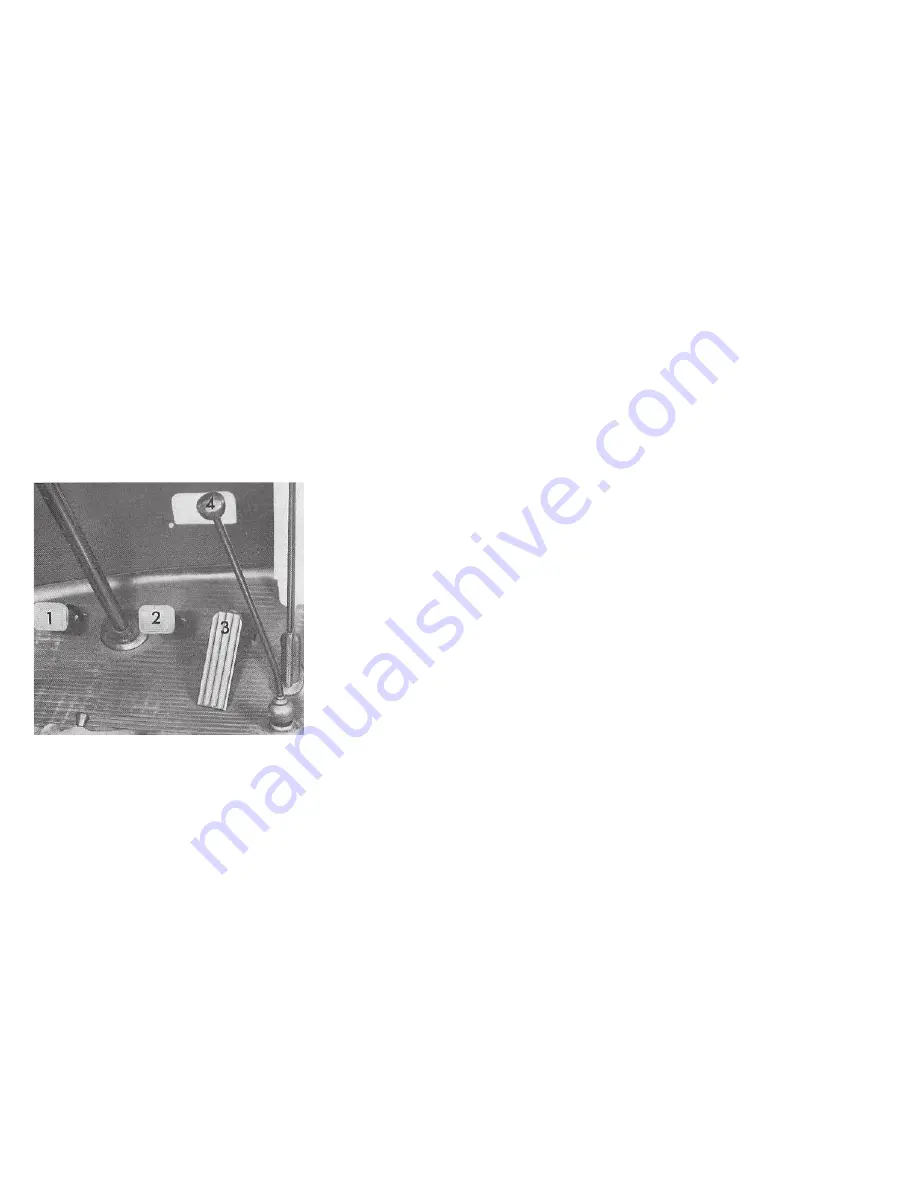
Controls for Manual Transmission
1 - Clutch pedal
Always depress the clutch pedal fully
when changing gears. Do not hold the car
on a steep hill with the clutch pedal par-
tially depressed. This may cause prema-
ture wear or damage.
Make sure that the movement of the brake
pedal is not obstructed by a floor mat, or
any other object.
2 - Brake pedal
3 - Accelerator pedal
Make it a habit to check the operation of
your brakes. You will remember from
page 24 that the brake warning light will
alert you if one brake circuit may have
failed.
Volkswagen automobiles have excellent
brakes, but they are still subject to wear . . .
depending on how the brakes are used.
If you find that the brake pedal travel has
increased, have the brakes adjusted; if
necessary, between the specified main-
tenance intervals.
Brake linings may not have the highest
possible braking efficiency when new.
Therefore allow for longer braking
distance during the initial 100 to 150 miles.
This also applies when brake pads or
shoes are replaced.
For good fuel economy we recommend
smooth and even acceleration. Very fast,
racy driving, alternating between full
throttle and hard braking, raises the fuel
consumption considerably. Also, tires
and brake linings wear faster.
You can drive most economically between:
10 and 23 mph in 2nd gear
15 and 35 mph in 3rd gear
30 and 50 mph in 4th gear
Keep in mind that the braking distance in-
creases very rapidly as the speed increa-
ses. At 60 mph, for example, it is not twice
but four times longer than at 30 mph. Tire
traction is also less effective when the
roads are wet and slippery. Therefore,
always maintain safe distance.
Driving through deep water may reduce
tire traction. Moisture on the brakes may
also affect braking efficiency. Cautiously
apply the brakes for a test. If you notice
a lag in the braking action, the brakes
may be wet. They will dry after you have
applied the brakes a few times, but do it
very cautiously.
28






























